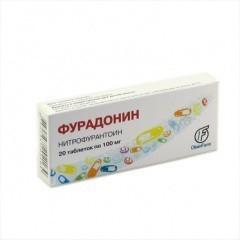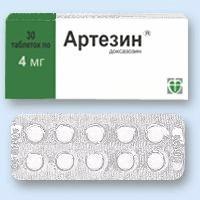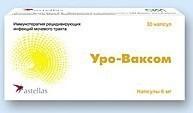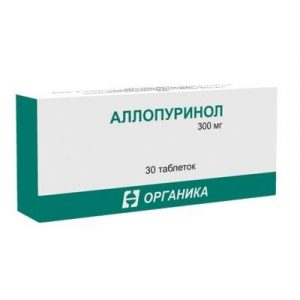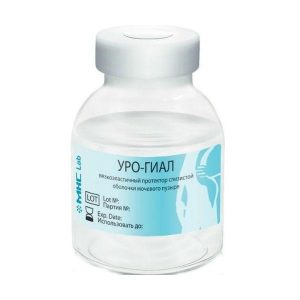Description
Release form
Tablets
Packing
20 pcs.
Pharmacological action
Furadonin – an antimicrobial drug, is a derivative of nitrofuran. It has a bactericidal and bacteriostatic effect in case of urinary tract infections and has a wide spectrum of action. Active against most strains of Escherichia coli, Staphylococcus spp., Streptococcus spp., Salmonella typhi, Salmonella paratyphi A, Salmonella paratyphi B, Shigella sonnei, Proteus, Enterobacter spp.
Indications
Infectious and inflammatory diseases of the urinary tract caused by microorganisms sensitive to the drug: pyelitis pyelonephritis cystitis urethritis
Prevention of infections during urological operations or examination (cystoscopy, catheterization, etc.).
Contraindications
Severe renal excretory dysfunction oliguria glucose-6-phosphate dehydrogenase deficiency pregnancy early childhood (up to 1 month) hypersensitivity to nitrofuran derivatives.
Special instructions
The risk of developing peripheral neuropathy is increased in patients with anemia, diabetes mellitus, electrolyte imbalance, vitamin B deficiency, severe renal failure.
The drug should not be prescribed for the treatment of diseases of the cortical substance of the kidneys, with purulent paranephritis and prostatitis.
To reduce the risk of side effects from the gastrointestinal tract, the drug should preferably be prescribed with food or milk.
Furadonin is not prescribed in combination with drugs that cause impaired renal function.
When using Furadonin during lactation, it is necessary to resolve the issue of terminating breastfeeding.
Dosage and administration of
Adults are prescribed 100-150 mg orally 3-4 times a day. The course of treatment is 5-8 days.
If there is no effect during this period, it is not advisable to continue treatment.
Maximum doses: single – 300 mg, daily – 600 mg.
Children Furadonin is usually prescribed at a rate of 5-8 mg / kg per day in 3-4 doses.
Side effects
Possible discomfort in epigastrium, anorexia, nausea, vomiting, diarrhea, hepatitis, cholestatic jaundice cough, chest pain, shortness of breath, pulmonary infiltrates, interstitial pneumonitis or fibrosis, dyspnea, dyspnea, dyspnea, dyspnea, headache, nystagmus, dizziness, drowsiness, leukopenia, eosinophilia, granulocytopenia, agranulocytosis, thrombocytopenia, hemolytic anemia, megaloblastic anemia (changes are reversible) soup urinary tract infection, often caused by Pseudomonas aeruginosa, urticaria, Quincke’s edema, pruritus, rash. Very rarely – anaphylactic shock, an attack of bronchial asthma (in patients with a history of asthma), drug fever, exfoliative dermatitis, erythema multiforme, flu-like symptoms, arthralgia.
Drug Interactions
The simultaneous use of nalidixic acid and antacids containing magnesium trisilicate reduces the antibacterial effect.
Incompatible with fluoroquinolones. Drugs that block tubular secretion reduce the antibacterial effect (by reducing the concentration of nitrofurantoin in the urine) and increase the toxicity (concentration in the blood increases) of the drug.
Storage conditions
In a dry, dark place.
Deystvuyuschee substances
nitrofurantoin
Conditions of release from drugstores
Prescription
dosage form
tablets
Olainfarm, Latvia
